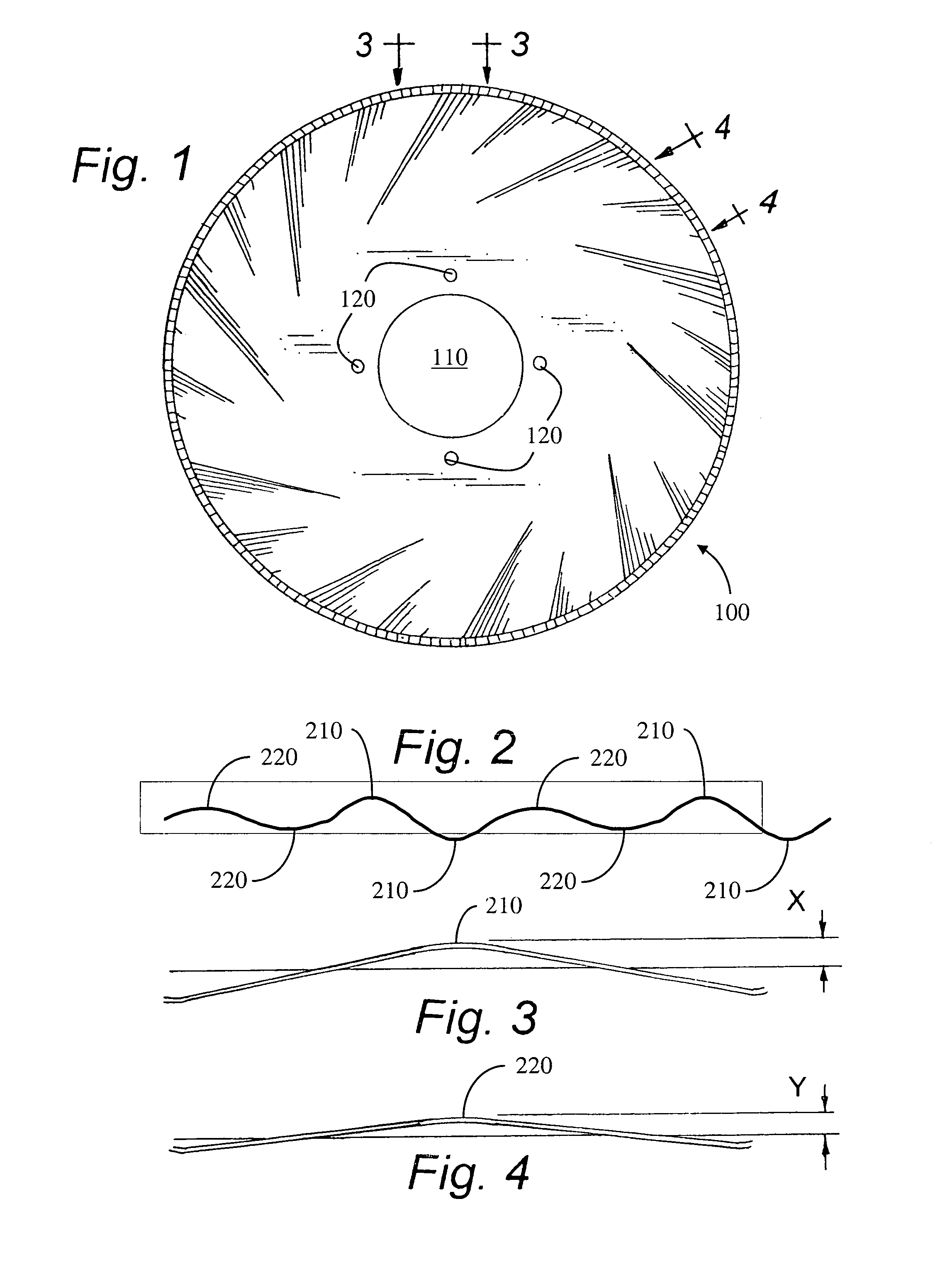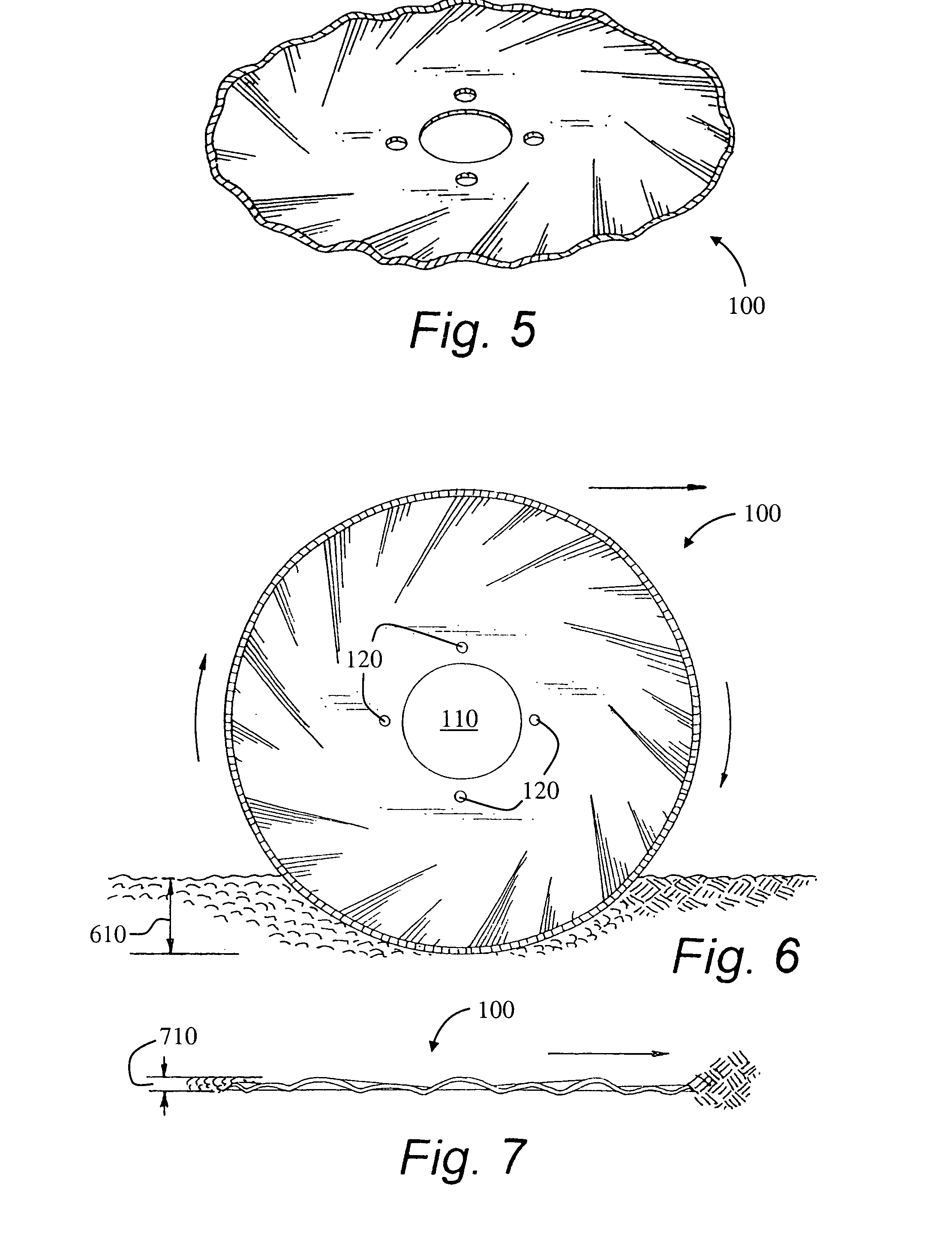Variable wave coulter
a wave coulter and wave wave technology, applied in the field of wavy coulters, can solve the problems of dumping large amounts of dir
- Summary
- Abstract
- Description
- Claims
- Application Information
AI Technical Summary
Benefits of technology
Problems solved by technology
Method used
Image
Examples
second embodiment
[0044]the present invention is illustrated in FIGS. 8-15. The variable wave coulter 100 in this embodiment has three maximum amplitudes 910, 920, 930. As can be seen in FIG. 8, this embodiment may be realized by waves having crests and valleys directed in generally radial direction. However, this embodiment is not limited to this configuration, and the crests and valleys may extend back from the peripheral edge of the variable wave coulter in respective adjacent lines disposed at a predetermined acute angle with respect to the radius of the variable wave coulter 100 body as was shown in FIGS. 1, 5 and 6.
[0045]The three maximum amplitudes 910, 920, 930 are clearly seen in FIG. 9 which illustrates a segment of the periphery of the variable wave coulter 100 of this second embodiment. Crests having the largest amplitude 910, the medium amplitude 920, and the smallest amplitude 930 are shown in FIGS. 10-12, respectively.
[0046]The variable wave coulter 100 of the second embodiment is show...
third embodiment
[0047]the present invention is illustrated in FIGS. 16-24. The variable wave coulter 100 in this embodiment has four maximum amplitudes 1710, 1720, 1730, 1740. As can be seen in FIG. 16, this embodiment may be realized by waves having crests and valleys directed in generally radial direction. However, this embodiment is not limited to this configuration, and the crests and valleys may extend back from the peripheral edge of the variable wave coulter 100 in respective adjacent lines disposed at a predetermined acute angle with respect to the radius of the variable wave coulter 100 body as was shown in FIGS. 1, 5 and 6.
[0048]The four maximum amplitudes 1710, 1720, 1730, 1740 are clearly seen in FIG. 17 which illustrates a segment of the periphery of the variable wave coulter 100 of this second embodiment. Crests having the largest amplitude 1710, the medium-large amplitude 1720, the medium-small amplitude 1730, and the smallest amplitude 1740 are shown in FIGS. 18-21, respectively.
[00...
PUM
 Login to View More
Login to View More Abstract
Description
Claims
Application Information
 Login to View More
Login to View More - R&D
- Intellectual Property
- Life Sciences
- Materials
- Tech Scout
- Unparalleled Data Quality
- Higher Quality Content
- 60% Fewer Hallucinations
Browse by: Latest US Patents, China's latest patents, Technical Efficacy Thesaurus, Application Domain, Technology Topic, Popular Technical Reports.
© 2025 PatSnap. All rights reserved.Legal|Privacy policy|Modern Slavery Act Transparency Statement|Sitemap|About US| Contact US: help@patsnap.com



